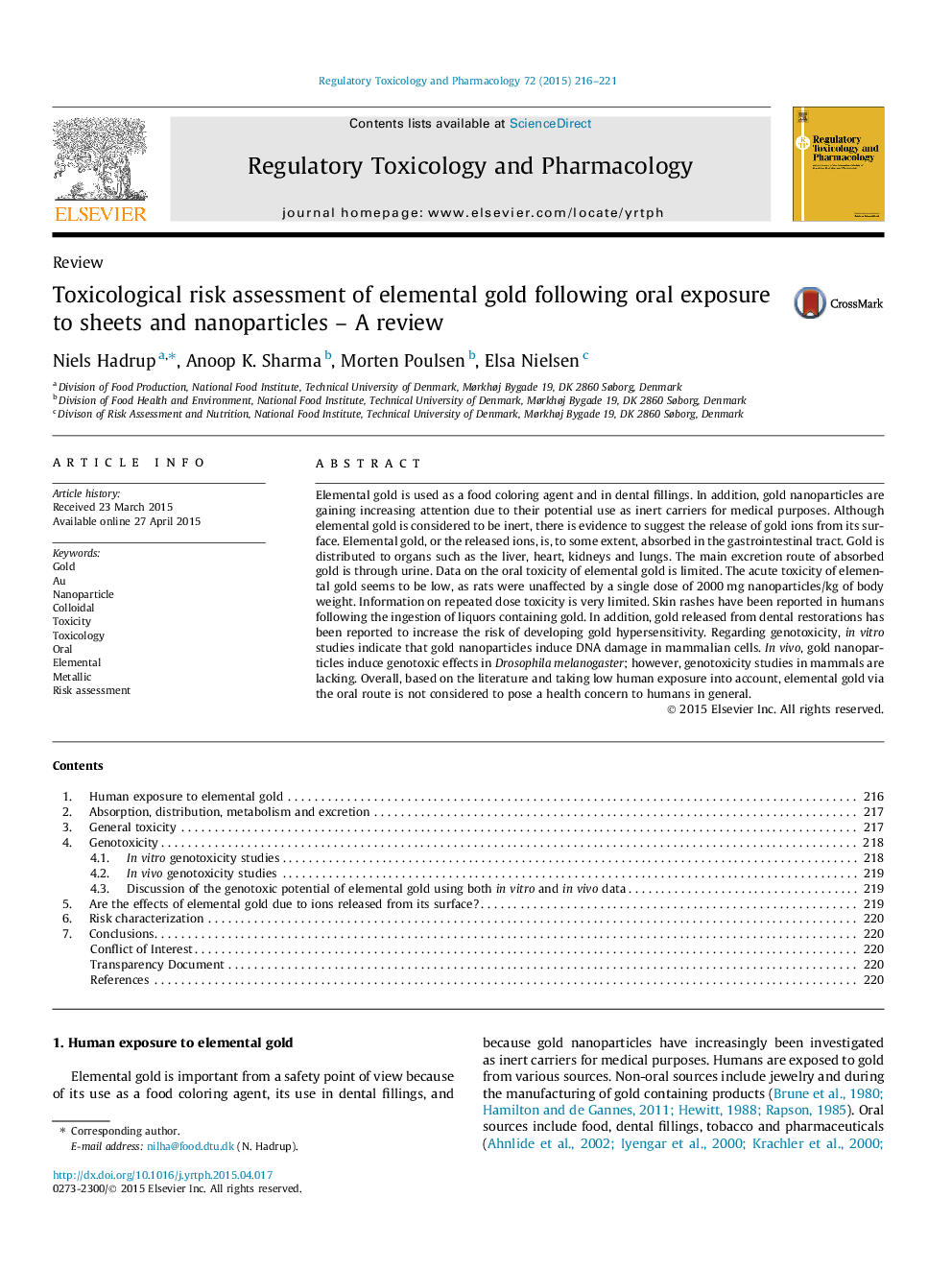| Article ID | Journal | Published Year | Pages | File Type |
|---|---|---|---|---|
| 5856744 | Regulatory Toxicology and Pharmacology | 2015 | 6 Pages |
â¢We review the oral toxicity of elemental gold in the form of sheets and nanoparticles.â¢We report dose levels resulting in toxic effects.â¢We discuss whether effects of elemental gold are mediated by ions released from the surface.â¢Elemental gold via the oral route is not considered to pose a health concern to humans in general.
Elemental gold is used as a food coloring agent and in dental fillings. In addition, gold nanoparticles are gaining increasing attention due to their potential use as inert carriers for medical purposes. Although elemental gold is considered to be inert, there is evidence to suggest the release of gold ions from its surface. Elemental gold, or the released ions, is, to some extent, absorbed in the gastrointestinal tract. Gold is distributed to organs such as the liver, heart, kidneys and lungs. The main excretion route of absorbed gold is through urine. Data on the oral toxicity of elemental gold is limited. The acute toxicity of elemental gold seems to be low, as rats were unaffected by a single dose of 2000Â mg nanoparticles/kg of body weight. Information on repeated dose toxicity is very limited. Skin rashes have been reported in humans following the ingestion of liquors containing gold. In addition, gold released from dental restorations has been reported to increase the risk of developing gold hypersensitivity. Regarding genotoxicity, in vitro studies indicate that gold nanoparticles induce DNA damage in mammalian cells. In vivo, gold nanoparticles induce genotoxic effects in Drosophila melanogaster; however, genotoxicity studies in mammals are lacking. Overall, based on the literature and taking low human exposure into account, elemental gold via the oral route is not considered to pose a health concern to humans in general.
